INTRODUCTION
All age groups from children to older relish the flavors of chocolates. Even though some chocolates have a bitter taste, every one of us admires to eat it. Some chocolates have health benefits as well.
 |
Chocolates have an important place in all celebrations or treat around the world. It is one of the most common ingredients in the preparation of sweets and desserts. Switzerland people are the highest consumer of chocolate per capita in the World.
The 1990’s kids in India used to buy chocolates also referred as ‘mittai’ in Tamil slang from the petty shop if the shopkeeper does not have change. By that, times there are not many varieties or flavours in chocolates. The common chocolates were ‘Coffy Bite’, ‘Nutrine Aasai’, ‘Orange mittai’, ‘Maha Lacto’, ‘Eclairs’, ‘Koka naka’, ‘Poppins’, ‘Mango Bite’ and the very famous chewing gum ‘Boomer’ and ‘Chiclets’. Now many of these chocolates disappeared. Today the Chocolates come in many varieties and in different flavours.
Have you ever wondered how the chocolate came into existence, who discovered, how it was prepared earlier, how it got spread the answer to all these queries you can find here.
Chocolate prepared from the ‘Theobroma cacao’, a tropical tree.
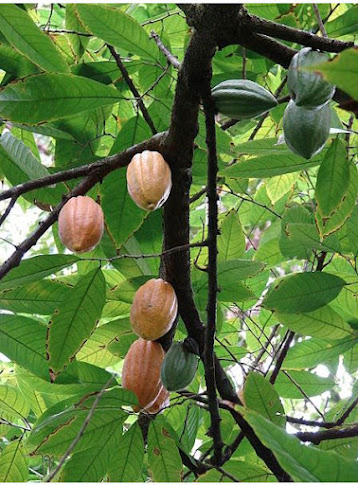 |
| COCOA TREE WITH FRUITS |
| Image source: Wikimedia Commons |
The biological name of cocoa tree is Theobroma cacao given by the Swedish Botanist ‘Carl Linnaeus’ in 1753. The term Theobroma is a Greek term that indicates ‘Food of the Gods’ (broma-food, Theo- God). The Theobroma cacao trees are indigenous to the Amazon and Orinoco river basins of South America. These trees distributed from southeastern Mexico to the River Amazon.
The term Chocolate arose from the Nahuatl (Aztec) term ‘xocolatl’ indicates ‘Bitter water’.
HISTORY
Mesoamerican (present Mexico): The earliest record of using cocoa was around 1100 BC by the Olmec people (earliest civilizations in Latin America). They were the first to discover chocolate making process.
By 1900 BC, Mokayo people of Mexico used cocoa as a beverage.
During the early (250-600 AD) or in the Middle (600 -900 AD) classical period of Mesoamerican history the Cocoa trees were grown by Maya in south Yucatan, around 600 AD Aztecs of Mexico, Incas of Peru peoples cultivated cocoa trees.
Cocoa became the most significant plant during the Maya empire (250AD-900 AD). The Mayas’ had immense knowledge of cocoa cultivation and they initiated the first cocoa plantations.
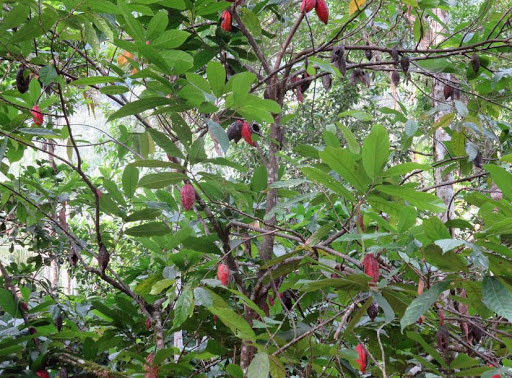 |
| COCOA TREE |
Cocoa used as basic ingredients as well as an offering to the Gods. It also used as a commodity for exchange in trade.
Chocolatl : the main drink produced from the cocoa beans.
For thousands of years, tribes and empires in Central America produced cocoa and consumed drinks prepared from it. This was unknown to the rest of the World.
The Aztec’s used cocoa beans as currency.
Christopher Columbus, after the discovery of America in 1502, he bought some cocoa beans to Europe.
In the beginning of 1500, the Spanish conquerors went to Central and South America to corrupt its rich resources and land.
By 1519-1520, the Spanish defeated Mexico, and one of the conquistadores Hernán Cortés entered the Aztec city of Tenochtitlán in 1519, the monarch Montezuma II greeted him with the unique beverage obtained from cocoa beans Chocolatl. He was the preeminent European to taste the cocoa beans or chocolate.
In 1528, Hernán Cortés returned to his country Spain and introduced the cocoa beans and the Mayan method of preparing the Chocolatl drink from cocoa beans to the King Charles and thus it spread across the whole of Europe.
For nearly 100 years, the Spain kept this method as secret as they were the only suppliers of Chocolates to the Europeans.
 |
| COCOA FRUIT |
The Spanish were the first to mix sugar or honey to the preparations to combat the bitter taste of cocoa beans.
Later, Vanilla, aniseed, nutmeg, cloves, orange, rosewater, pepper, and cinnamon also added for savour.
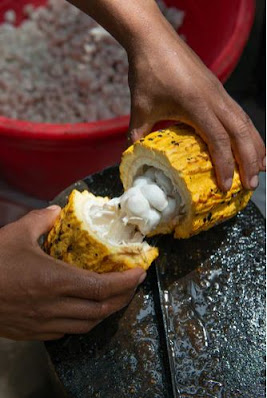 |
| COCOA FRUIT -INNER SECTION |
By 1602, chocolate traveled from Spain to Austria.
In 1606, chocolate reached Italy.
In 1615, When the Spanish Princess Anne of Austria married France King Louis XIII in 1615, chocolate spread to France.
In 1657, London opened the first chocolate shop.
1765: Dr. James Baker and John Hannon founded ‘The Baker Chocolate Company’ in Boston – antique producer of chocolate in the United States.
From Europe, it spreads to Latin America, Asia, and Africa.
In the 1960s West Africa was the leading producer of cocoa since the cocoa arrived there in the 19th century.
During these periods, the chocolates were very expensive and used only by the aristocrats.
The ‘Great Chocolate Boom’: By the end of the 19th century and the beginning of the 20th century the demand for the chocolate grew rapidly, Clarence- Smith referred this as the ‘Great Chocolate Boom’.
Then the cocoa production spread to other countries and more beans have been produced then the price of chocolate decreased gradually and many people enjoyed the taste.
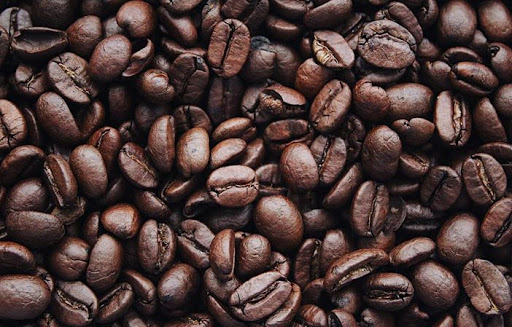 |
| COCOA BEANS |
Due to the Industrial Revolution, a new process for the making of chocolate made the production faster.
1815: Dutch (Netherland) chemist Coenradd van Houten prepared chocolates by mixing alkaline salts which reduced the bitterness in cocoa beans.
1828 : Coenradd van Houten invented a press that removed half of the natural fatty matter (cocoa butter) from the chocolate liquor. This made the modern era of chocolate.
1847 : Joseph Fry - English chocolatier, his factory ‘Fry’s of Bristol ’ began to produce chocolate bars (first chocolate in solid state) in huge quantity.
1862: Rowntree’s of York, England started to produce chocolates.
1866 : Joseph Fry introduced chocolate cream and it became popular.
1868 : Cadbury manufactured box chocolates in England. In 1875, it manufactured their first Easter egg (chicken eggs decorated and used as gifts).
1875 : Daniel Peter, chocolatier of Switzerland introduced milk chocolate. He mixed condensed milk formulated by Henri Nestlé.
He shaped the chocolate in a triangular bar and it was known as ‘Peter’s Delta Chocolate’.
1879 : Rudolphe Lindt invented the conching machine in Switzerland. This made chocolate a smoother and better tasting.
1890’s : About half of the world’s consumption of chocolate is made in Switzerland.
By 1893, Milton S. Hershey started Hershey’s chocolates with coated caramels.
At the end of the 19th century and early 20th century, many notable chocolate companies began to rise.
In 1930’s, chocolates were wrapped individually, and then it was put arbitrarily into the box e.g. Quality Street, Cadbury Roses.
In 1935, putting air bubbles in the chocolate sold in the market.
In the same year Galak (Milky Bar) sold in the market.
1946 : White chocolates introduced o the U.S by Frederick E. Hebert (Hebert Candies) in Massachusetts, near Boston.
1960 : smoother chocolate launched and it sold as in the name of ‘Galaxy’.
TYPES OF CHOCOLATE
There are mainly three categories in chocolate. They are Dark, Milk and White chocolates. From this, many combinations of chocolates made.
DARK CHOCOLATE
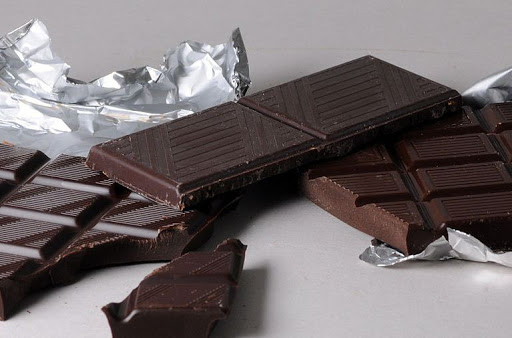 |
| DARK CHOCOLATE |
| Image source: Wikimedia Commons |
|
|
|
This has the highest proportions (50% - 80%) of cocoa solids and low sugar content this makes the chocolates to taste bitter. The U.S. Food and Drug Administration calls this chocolate as ‘sweet chocolate.’ The standard proportion of cocoa solids is 43% in European chocolates and that of U.S. 35%.
MILK CHOCOLATE
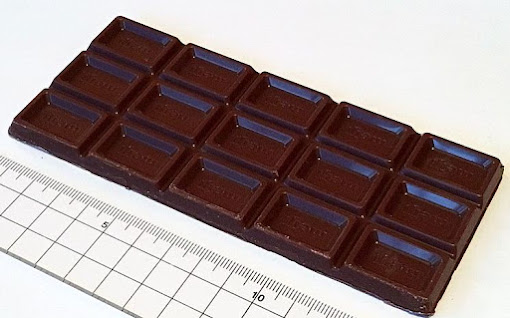 |
Meiji milk chocolate bar |
 |
| MILK CHOCOLATE |
This chocolate is prepared from at least 25% cocoa solids and it contains milk powder or condensed milk. In the U.K. and Ireland minimum 20% of total cocoa solid must contain in this chocolates.
WHITE CHOCOLATES
 |
White chocolate with rose petals |
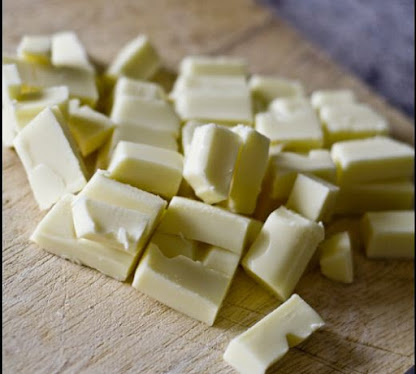 |
| Chopped white chocolate chunks |
This chocolate does not contain cocoa solids. This variety has 20% of cocoa butter additionally prepared with milk or milk products.
LARGEST PRODUCERS AND CONSUMERS
There are almost one billion chocolates are consumed every day.
The World Chocolate Day has been dedicated on July 7 since 2009 and some even accept that it commemorates the day chocolate started its journey to Europe in 1550.
Cocoa tree requires high temperature, humid conditions, and plenty of rainfall. West Africa produces nearly two-thirds of the world’s cocoa beans productions. Ivory Coast and Ghana are the two largest producers of cocoa beans, nearly half of the worlds’ production. The other largest producers are Indonesia, Nigeria, Cameroon, Brazil, Ecuador, Mexico, Peru, Colombia and the Dominican Republic.
Switzerland is the world’s highest consumption of chocolates per head of the population. Annual per capita consumption is 8.8 kilograms (19.4 pounds) as of 2018, followed by Germany with 8.07 kilograms (17.8 pounds), Ireland 7.89 kilograms (17.4 pounds), United Kingdom 7.62 kilograms (16.8 pounds) and Sweden 6.62 kilograms (14.6 pounds).
TOP CHOCOLATE COMPANIES
The global market as of 2019 statistics was 130 billion US$. The top companies as of 2019 are
- Mars Wrigley Confectionery (USA): The famous brands are M&Ms, Galaxy, Snickers, Skittles, and Mars bars.
- Ferrero Group (Luxembourg / Italy): The famous brands are hazelnut cream filled chocolate, Kinder, and Nutella.
- Mondelēz International (USA): The famous brands are Oreo, Milka, Toblerone, TUC, and Cadbury.
- Meiji Co Ltd (Japan)
- Hershey Co (USA): Hershey's
Kisses, Kit Kat wafer bar
- Nestlé SA (Switzerland)
- Lindt & Sprüngli AG (Switzerland)
- Pladis (UK): The famous brands are McVitie’s, Ulker, and GODIVA.
- Ezaki Glico Co Ltd (Japan)
- Orion Corp (South Korea): Choco Pie is among the best-selling chocolate snack products in Asia.
CONCLUSIONS
Chocolates are relative with high calorific content. For centuries, chocolates consumed as medicine in the Maya civilization and modern research has confirmed some positive results. Cocoa is one of the known sources of anti-oxidants. In 1999, Doctors from Netherland identified catechins content in the chocolate. Catechins, is one of the most powerful anti-oxidant. Dark chocolates contain 53.5mg per 100g. This shown the beneficial effect of heart disease and some cancers.
Chocolate’s negative impacts with the public are obesity, tooth decay, acne, and migraine. However, scientific evidence says that chocolate does not play a major role in this if consumed as part of a balanced diet.



Wow.. .chocolates yummy 😋 topic akka
ReplyDelete:):):)
Delete